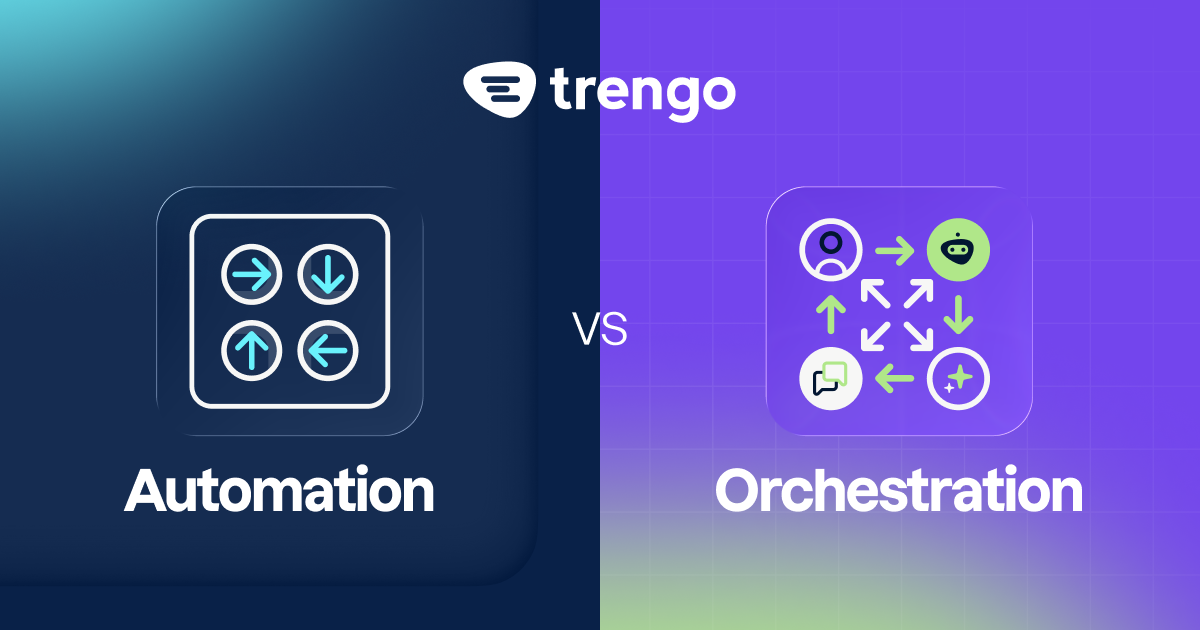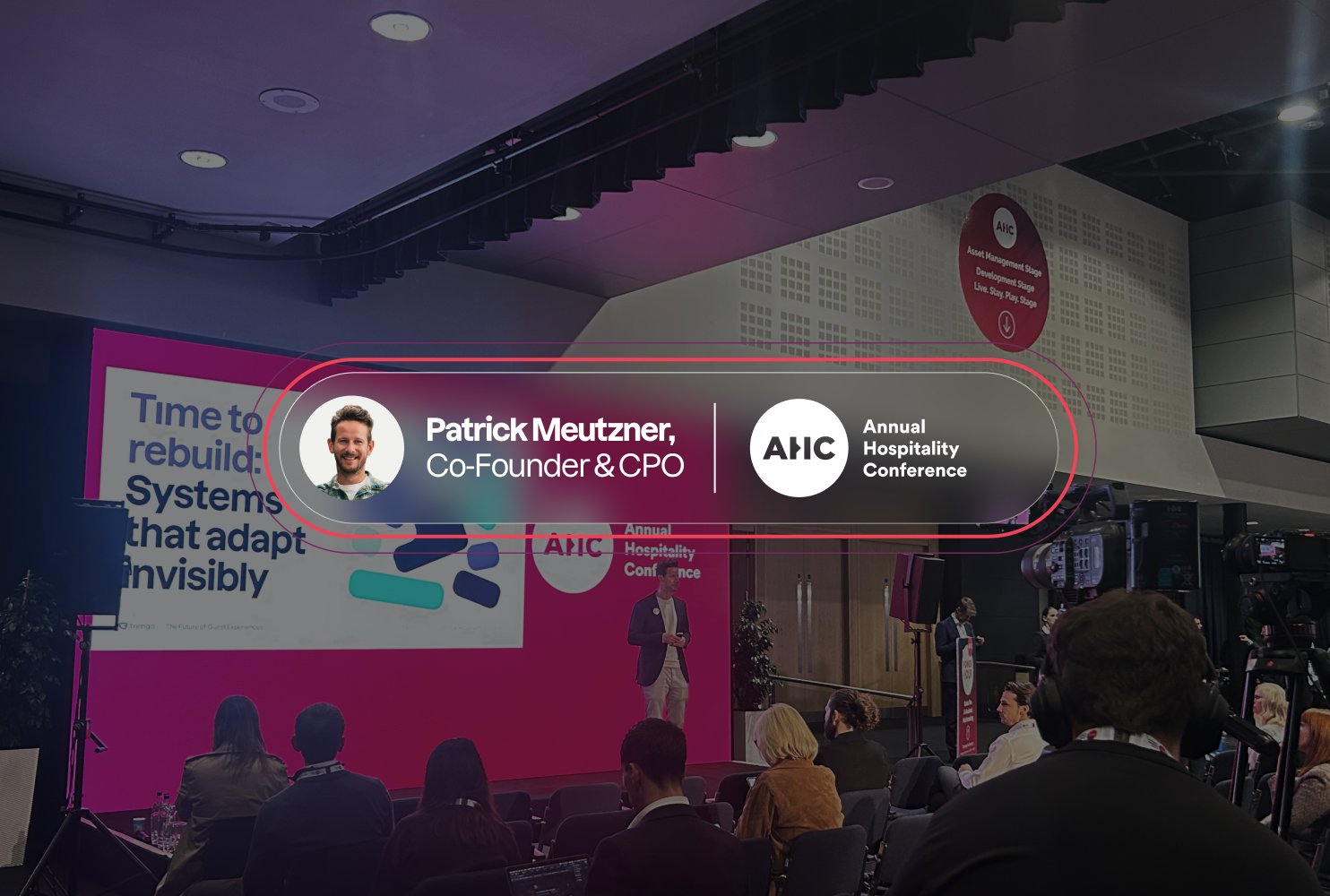Managing customer conversations can get overwhelming fast, especially when they flood in from multiple channels such as WhatsApp, Instagram, email, and chat all at once. That’s where a thought-out and effective customer service workflow process comes in. It’s the difference between reactive chaos and strategic control.
In this blog, we’ll cover what a customer service workflow really is, why it matters, and how your team can build smarter flows using automation, AI, and the right tools.
What is a customer service workflow?
A customer service workflow is a structured, repeatable process that helps support teams handle customer issues with greater efficiency. It can work as a step-by-step guide to direct your team in how incoming queries should be handled.
Whether it's answering order questions or resetting passwords, a clear customer service workflow process helps your team give consistent responses, reduce errors, and speed up response times. It also ensures customers always receive a reliable service that gives them the answers they are looking for, even if they are talking to team members who are on their first day.
A workflow customer service setup should reduce the manual work your team has to do, eliminate guesswork, and create a better experience for both customers and your team.
Common customer service workflow examples include:
- Handling product return or exchange requests
- Processing refund or order updates
- Resetting customer login credentials
- Scheduling service appointments
- Assigning support tickets based on topic or channel
With the right customer service workflow software, these types of enquiries don’t need to be handled manually. Tools like Trengo use rules, labels, and automation to keep things moving smoothly and free up your team's time.
Why creating customer service workflows matters
The right customer service workflow process will tidy up your team's inbox and create smoother experiences for your customers.
Here are some of the top benefits you will see if you set up structured workflows:
Increased productivity
Manual work slows teams down. With a customer service workflow, you can automate repetitive tasks, reduce unnecessary data entry, and keep everything in sync across your tools. Your team spends less time on admin and more time helping customers.
Faster and smarter delegation
With tools like Trengo’s automation rules and label-based assignments, every new conversation ends up being responded to by the right person, based on the channel, topic, or customer type.
Clear ownership and accountability
Workflows assign conversations and responsibilities automatically, making sure no ticket is missed. With skill-based routing, you can ensure technical queries go straight to the right expert who has the knowledge to give the best response.
Unified customer view
Trengo’s multi-channel inbox connects messages from channels like WhatsApp, chat, Instagram, and email in one place. Add CRM data with one of Trengos many integrations and now your team gets the complete picture of the customer, improving service and avoiding repeated questions.
Fewer errors, faster reporting
By reducing manual input in various tasks, workflows help cut down on mistakes. With Trengo, you can also generate reports on team performance, response times, and more without the need to manually go through the data.
Consistency across the board
Every customer gets the same high-quality service because every agent follows the same clear steps. This consistency builds trust and sets the foundation for long-term loyalty.
Keeps your tech smart
Workflows make your tools work harder for you. In fact, AI is playing a growing role in this area with 71% of organisations are now using generative AI in at least one business function, from customer service to software development. And it’s not just tech teams, it's being used in all sorts of departments and at all kinds of levels..
Trengo’s own AI features can automatically tag, assign, and even draft responses based on past conversations. It’s like giving your support team a superpower, right where they already work.
Simplifies onboarding for new team members
A clear customer service workflow gives new team members a roadmap to follow from day one. Instead of guessing what to do next or relying on unorganised and dispersed instructions, they can step into a defined process with confidence. This speeds up onboarding and ensures consistent service across the board.
You can use Trengo to combine automation rules with labels and assignments so new team members are only routed to conversations they’re trained to handle, and then add more as they learn and gain experience.
10 customer service workflows your team needs
A well-built customer service workflow process gives your team clarity, improves consistency, and strengthens every customer touchpoint. Here are ten workflows your team can start using.
1. Customer support workflow
This is your day-to-day support foundation. When a customer reaches out with a question, issue, or complaint, the workflow ensures the query is registered, prioritised, routed to the right person, and resolved.
How it works:
- A message comes in via chat, WhatsApp, or email.
- A support ticket is automatically created and tagged (e.g. “billing” or “urgent”).
- The query is routed to the right agent based on skill or topic.
- The agent responds and logs resolution steps.
- A feedback form is sent to close the loop.
How Trengo can help:
Set up automation rules to route queries based on topic or channel. Use labels and assignments to prioritise and track progress across your team.
2. Customer onboarding workflow
First impressions count. Onboarding workflows help new customers get set up and see value quickly, which improves adoption and retention.
How it works:
- Send a welcome email when a new account is created.
- Offer a guided product tour via a chatbot or onboarding email.
- Check in after a few days with tips and support links.
- Follow up after two weeks to gather feedback and offer help.
How Trengo can help:
Use the Flowbot builder to create step-by-step product walkthroughs. Schedule automated check-ins using auto replies and rules based on signup date.
3. Complaint resolution workflow
Even the best products and teams get complaints. What matters is how quickly and thoughtfully you respond. This workflow ensures no complaint is left unanswered and helps rebuild trust after a problem.
How it works:
- Complaint comes in and is tagged (e.g. “shipping delay”).
- A confirmation message is sent: “We’re on it.”
- Issue is escalated internally if needed.
- Agent follows up with the customer, resolves the issue, and closes the loop.
How Trengo can help:
Create trigger-based automations to escalate unresolved tickets within a set time. Use internal notes to keep teams aligned across shifts.
4. Product feedback workflow
Customer insights provide huge value and help you improve your product and service. A structured feedback workflow helps you get feedback at the right time, and then act on it.
How it works:
- After purchase or support interaction, the customer receives a short feedback form.
- Responses are categorised and stored.
- Insights are reviewed by product or marketing teams.
How Trengo can help:
Send automated feedback forms post-resolution using auto replies. Tag conversations that include product suggestions to review later.
5. Account update workflow
Account updates are a common request. From changing an email address to updating payment details, these things can be dealt with easily but are also easy to mishandle without a clear process.
How it works:
- Request comes in and is tagged as “account update.”
- Agent verifies the customer’s identity.
- Update is made and confirmed.
- A confirmation message is sent.
How Trengo can help:
Use labels to differentiate routine changes from sensitive updates. Set up confirmation messages and add verification steps using Flowbots
6. Proactive customer outreach workflow
Support doesn’t always have to be reactive. Proactive outreach helps you check in before customers have a problem.
How it works:
- A customer hasn’t logged in or interacted in 14+ days.
- They receive a friendly check-in: “Need help getting started?”
- Based on the response, you offer tips or schedule a call.
- Follow up with relevant content if they don’t respond.
How Trengo can help:
Trigger proactive messages using rules and CRM-based filters. Use multi channel messaging to reach them on the platforms they prefer.
7. Escalation workflow
Some issues need more time and attention than others. An escalation workflow ensures critical problems get that attention from the right person and fast.
How it works:
- A complex issue is identified and tagged as “high priority.”
- The ticket is forwarded to a senior agent or technical team.
- Internal notes explain the background and urgency.
- A dedicated follow-up is sent to the customer with updates.
- Once resolved, the issue is flagged for internal review.
How Trengo can help:
Use automation rules to flag urgent queries and escalate them to specialised teams. Track resolution progress using labels and assignment histories.
8. Loyalty and retention workflow
Keeping happy customers is cheaper than winning new ones. This workflow helps you stay engaged with loyal users and catch those at risk of churning.
How it works:
- Your CRM flags a long-term customer who hasn’t interacted recently.
- They’re added to a re-engagement sequence.
- A personalised message is sent with a tip, offer, or check-in.
- Responses are tracked and followed up based on interest.
How Trengo can help:
Segment contacts using CRM data. Use automation rules to send re-engagement messages and track interactions across all channels.
9. Channel-specific routing workflow
Customers don’t just email anymore, they message you on WhatsApp, Instagram, live chat, and more. This workflow ensures the right person handle the right channels.
How it works:
- Messages are tagged based on the channel.
- Social DMs are routed to the social team, while emails go to customer support.
- Specialised team members handle platform-specific requests quickly.
How Trengo can help:
Trengo’s multi-channel inbox pulls all messages into one view. Set rules to route each channel to the appropriate team without switching tools.
10. AI-powered first response workflow
Speed matters when it comes to customer service. This AI-enhanced workflow uses smart suggestions or automated replies to buy time and manage expectations.
How it works:
- A new message comes in during off-hours.
- Trengo AI sends an instant, context-aware reply: “We’ve received your message and will get back within X hour(s).”
- In simple cases, the AI suggests answers the customer service team can review and send.
- The team member picks up where AI left off with all the context ready.
How Trengo can help:
Enable AI for customer service workflow automation to speed up replies and reduce wait times.
Steps to build a customer service workflow
Creating a useful customer service workflow process takes more than just good intentions. It requires a clear understanding of your current operations, the right tools, and ongoing tweaks to stay aligned with customer needs. Here’s how to build one that actually works:
1. Assess your current support setup
Start by mapping out how your team currently handles incoming queries. Break tasks into four groups:
- Real-time support (chat, phone)
- Asynchronous support (email, contact forms)
- Repetitive admin tasks (e.g. assigning tickets)
- Creative problem-solving (e.g. writing help articles)
Now identify what can be automated. For example, if your team spends time collecting customer details, a Trengo Flowbot can handle this in seconds.
2. Use automation to reduce manual work
Set up automation rules in Trengo to tag and prioritise incoming messages. Route tickets based on urgency, topic, or even language. Auto-replies can handle FAQs, freeing up your team for more complex cases.
3. Optimise ticket routing
Assign tasks based on agent strengths. For example, route technical queries to your IT-trained reps, and social media messages to your fastest responders. Trengo’s label and assignment rules make this easy to configure.
4. Test, learn and improve
Workflows aren’t a set-it-and-forget-it system. Schedule regular reviews to identify bottlenecks and gather input from your team. Use Trengo’s reporting features to track KPIs like resolution time or customer satisfaction, and adapt based on what the data shows.
Best practices for creating customer service workflows
These best practices will help you create customer service workflows that are reliable, scalable, and easy to manage.
1. Design around customer expectations
Your customers expect quick, clear answers, especially on channels like WhatsApp or live chat. Make sure your workflows reflect this. For instance, high-urgency queries should trigger instant replies and prioritised routing, not sit in a shared inbox.
Top tip: Use AI-powered first replies to acknowledge customer messages immediately, even during off-hours.
2. Balance automation with the human touch
Automation is useful, but it can’t always replace a human. Use it to reduce friction (with tasks such as tagging, assigning, or handling FAQs) but let your team step in when they need to. A well-placed personal message can change the tone of an entire conversation.
3. Keep your workflows easy to update
Support often needs to change and adapt fast as new features or products are released and the business evolves in other ways. Build workflows you can tweak without complex coding or lengthy downtime. Trengo’s visual Flowbot builder lets you update conversation paths in minutes.
4. Align with your wider support strategy
Workflows should support your overall goals, whether that’s faster response times, better CSAT scores, or reduced team workload. Check that each flow directly contributes to a key metric.
5. Document and train your team
A workflow only works if your team understands it. Keep documentation simple, accessible, and up to date. Pair it with short training sessions so everyone’s on the same page.
6. Start simple, then scale
It’s tempting to overhaul everything at once, but complex workflows can create more confusion than clarity. Instead, focus on building one or two customer service workflows that solve immediate pain points. For example, start with automating ticket tagging or setting up a basic Flowbot for FAQs.
As your team becomes familiar with the process, you’ll naturally spot new opportunities to streamline. Scaling then becomes more strategic. The key is to treat workflows as evolving tools, not finished products.
Top tip: Use labels and performance reports to track which workflows save time, improve resolution speed, or boost satisfaction. Scale those first, and refine the rest gradually.
Final thoughts on customer service workflows
An effective customer service workflow process turns chaos into control. It helps your team stay focused, your customers feel heard, and your business grows, without burning anyone out. With the right mix of smart planning, automation, and team alignment, every support interaction becomes faster, more consistent, and more meaningful.
And if you're ready to start using these workflows, Trengo is the platform to help you do it. From AI for customer service workflow automation to tools like our multi-channel inbox, Flowbot builder, and automation rules, everything’s built to help you streamline operations and stay in control.
Frequently Asked Questions (FAQs)
What is a customer service workflow and why is it important?
A customer service workflow is a structured, repeatable sequence of steps that guides how your team handles customer enquiries, issues, or requests. These workflows ensure every interaction is managed efficiently and consistently, from the first contact to resolution and follow-up. Well-designed workflows increase productivity, reduce errors, establish accountability, and deliver a seamless customer experience, helping your business build trust and loyalty.
How do I create an efficient customer service workflow?
Start by mapping your current processes, identifying every step from initial contact to resolution. Pinpoint bottlenecks and inefficiencies, then clearly define roles and responsibilities within your team. Use customer journey mapping to visualise key touchpoints and feedback loops to continuously refine your workflow. Incorporate automation and technology—such as Trengo—to streamline repetitive tasks, enable clear communication, and ensure accountability at every stage.
What are the key stages in a typical customer service workflow?
While workflows vary by business, common stages include:
- Initial contact: The customer reaches out via chat, email, phone, or social media.
- Gathering information: The agent collects relevant details about the issue.
- Problem-solving: The team analyses the problem and determines the best solution.
- Resolution: The issue is resolved and communicated to the customer.
- Follow-up: Feedback is requested to ensure satisfaction and identify improvements.
What tools can help automate customer service workflows?
Modern platforms like Trengo, Intercom, Live Agent, and Pega offer workflow automation for customer service. Trengo stands out by bringing all communication channels (WhatsApp, email, chat, social media) into a single inbox, automating up to 80% of repetitive conversations, and integrating with over 100 business tools. These platforms automate ticket routing, responses, follow-ups, and reporting, freeing your team to focus on complex issues.
Can AI improve customer service workflows?
Yes, AI significantly enhances customer service workflows by automating enquiry management, case routing, data entry, follow-ups, and even sentiment analysis. Trengo’s AI features suggest replies, summarise conversations, translate messages, and detect urgency or emotion, ensuring faster, more accurate responses and a more personalised customer experience.
How do omnichannel workflows work in customer service?
Omnichannel workflows integrate all customer touchpoints, phone, email, live chat, WhatsApp, and social media, into a unified process. With Trengo, your team can manage every conversation from one platform, ensuring customers receive consistent, real-time support across all channels. This approach enables seamless handovers, centralised data, and a holistic view of each customer’s journey, boosting satisfaction and loyalty.
What role does automation play in modern support workflows?
Automation is central to modern customer service workflows. It reduces response times, increases first contact resolution rates, and ensures accuracy and consistency. Automated systems handle routine queries, prioritise urgent cases, and trigger proactive notifications or follow-ups. With Trengo, automation also includes smart ticket assignment, IVR for phone support, and AI-powered chatbots, allowing your team to scale support without sacrificing quality.




.png)











